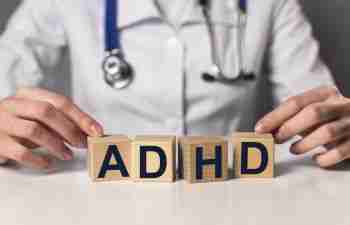
Attention Deficit Hyperactivity Disorder (ADHD) is a neurodevelopmental disorder that affects individuals of all ages, causing difficulties in attention, hyperactivity, and impulsivity. Understanding ADHD is crucial for those diagnosed, their families, educators, and society at large. In this comprehensive guide, we will delve into the intricacies of ADHD, covering its symptoms, causes, diagnosis, treatment options, and coping strategies.
1. Understanding ADHD
ADHD is characterized by persistent patterns of inattention, hyperactivity, and impulsivity that interfere with daily functioning and development. While it’s commonly diagnosed in childhood, it can persist into adolescence and adulthood. The exact cause of ADHD is not fully understood, but it’s believed to involve a combination of genetic, neurological, and environmental factors.
2. Symptoms of ADHD
Symptoms of ADHD vary depending on the type:
- Inattention: Individuals with ADHD may have difficulty sustaining attention on tasks, frequently make careless mistakes, have trouble organizing tasks and activities, and often lose things necessary for tasks.
- Hyperactivity: Hyperactive symptoms include fidgeting, squirming, running or climbing excessively, and feeling restless. In adults, this can manifest as inner restlessness or difficulty staying seated.
- Impulsivity: Impulsive behaviors may include interrupting or intruding on others, blurting out answers, and difficulty waiting their turn.
3. Causes of ADHD
Research suggests that genetics play a significant role in ADHD, with heritability estimates ranging from 70% to 90%. Environmental factors such as prenatal exposure to toxins like alcohol and tobacco, premature birth, low birth weight, and lead exposure may also contribute to the development of ADHD.
4. Diagnosis of ADHD
Diagnosing ADHD involves a comprehensive evaluation by a healthcare professional. This typically includes a thorough medical history, physical examination, and assessment of symptoms using standardized rating scales. Other conditions such as learning disabilities, anxiety, and depression may mimic ADHD symptoms, so it’s essential to rule out these possibilities.
5. Treatment Options for ADHD
Treatment for ADHD often involves a combination of medication, therapy, and lifestyle interventions:
- Medication: Stimulant medications such as methylphenidate and amphetamine are commonly prescribed to manage ADHD symptoms by increasing dopamine and norepinephrine levels in the brain.
- Behavioral Therapy: Cognitive-behavioral therapy (CBT) and behavioral interventions help individuals develop coping strategies, improve organizational skills, and manage impulsivity.
- Educational Interventions: Accommodations such as extended time on tests, preferential seating, and organizational aids can support academic success.
- Lifestyle Changes: Regular exercise, healthy eating habits, adequate sleep, and stress management techniques can all contribute to symptom management.
6. Coping Strategies for Individuals with ADHD
Living with ADHD can present various challenges, but there are strategies that can help:
- Create Structure: Establish routines and use visual schedules to help organize tasks and activities.
- Break Tasks Into Manageable Steps: Breaking tasks into smaller, more manageable steps can make them less overwhelming.
- Use External Cues: Set alarms, timers, and reminders to help with time management and task completion.
- Practice Mindfulness: Mindfulness techniques can help individuals with ADHD stay focused and calm.
- Seek Support: Joining support groups or working with a therapist can provide encouragement, understanding, and practical strategies for managing ADHD.
7. ADHD Across the Lifespan
While ADHD is often associated with childhood, it can persist into adulthood, albeit with different manifestations. Adults with ADHD may struggle with maintaining employment, managing finances, and maintaining relationships. However, with proper diagnosis and treatment, individuals with ADHD can lead fulfilling lives and achieve their goals.
Conclusion
Understanding ADHD is essential for recognizing its symptoms, obtaining an accurate diagnosis, and accessing appropriate treatment and support. By raising awareness and providing comprehensive information about ADHD, we can reduce stigma, promote understanding, and improve outcomes for individuals living with this disorder. Through a combination of medication, therapy, lifestyle changes, and coping strategies, individuals with ADHD can thrive and reach their full potential.